第6章
Of pack-saddles the ordinary sawbuck tree is by all odds the best, provided it fits.It rarely does.If you can adjust the wood accurately to the anatomy of the individual horse, so that the side pieces bear evenly and smoothly without gouging the withers or chafing the back, you are possessed of the handiest machine made for the purpose.Should individual fitting prove impracticable, get an old LOW California riding-tree and have a blacksmith bolt an upright spike on the cantle.You can hang the loops of the kyacks or alforjas--the sacks slung on either side the horse --from the pommel and this iron spike.Whatever the saddle chosen, it should be supplied with breast-straps, breeching, and two good cinches.
The kyacks or alforjas just mentioned are made either of heavy canvas, or of rawhide shaped square and dried over boxes.After drying, the boxes are removed, leaving the stiff rawhide like small trunks open at the top.I prefer the canvas, for the reason that they can be folded and packed for railroad transportation.If a stiffer receptacle is wanted for miscellaneous loose small articles, you can insert a soap-box inside the canvas.It cannot be denied that the rawhide will stand rougher usage.
Probably the point now of greatest importance is that of saddle-padding.A sore back is the easiest thing in the world to induce,--three hours' chafing will turn the trick,--and once it is done you are in trouble for a month.No precautions or pains are too great to take in assuring your pack-animals against this.On a pinch you will give up cheerfully part of your bedding to the cause.However, two good-quality woolen blankets properly and smoothly folded, a pad made of two ordinary collar-pads sewed parallel by means of canvas strips in such a manner as to lie along both sides of the backbone, a well-fitted saddle, and care in packing will nearly always suffice.
I have gone months without having to doctor a single abrasion.
You will furthermore want a pack-cinch and a pack-rope for each horse.The former are of canvas or webbing provided with a ring at one end and a big bolted wooden hook at the other.The latter should be half-inch lines of good quality.Thirty-three feet is enough for packing only; but we usually bought them forty feet long, so they could be used also as picket-ropes.Do not fail to include several extra.They are always fraying out, getting broken, being cut to free a fallen horse, or becoming lost.
Besides the picket-ropes, you will also provide for each horse a pair of strong hobbles.Take them to a harness-maker and have him sew inside each ankle-band a broad strip of soft wash-leather twice the width of the band.This will save much chafing.Some advocate sheepskin with the wool on, but this I have found tends to soak up water or to freeze hard.At least two loud cow-bells with neck-straps are handy to assist you in locating whither the bunch may have strayed during the night.They should be hung on the loose horses most inclined to wander.
Accidents are common in the hills.The repair-kit is normally rather comprehensive.Buy a number of extra latigos, or cinch-straps.Include many copper rivets of all sizes--they are the best quick-repair known for almost everything, from putting together a smashed pack-saddle to cobbling a worn-out boot.
Your horseshoeing outfit should be complete with paring-knife, rasp, nail-set, clippers, hammer, nails, and shoes.The latter will be the malleable soft iron, low-calked "Goodenough," which can be fitted cold.
Purchase a dozen front shoes and a dozen and a half hind shoes.The latter wear out faster on the trail.
A box or so of hob-nails for your own boots, a waxed end and awl, a whetstone, a file, and a piece of buckskin for strings and patches complete the list.
Thus equipped, with your grub supply, your cooking-utensils, your personal effects, your rifle and your fishing-tackle, you should be able to go anywhere that man and horses can go, entirely self-reliant, independent of the towns.